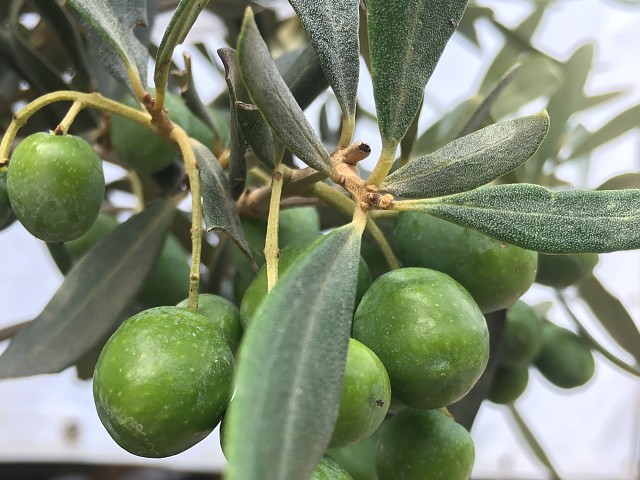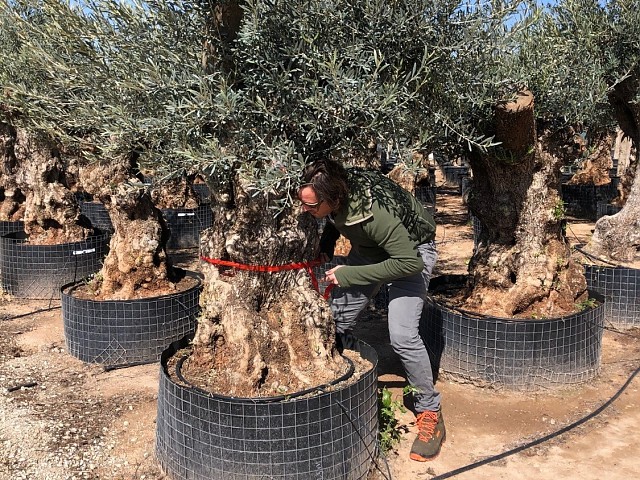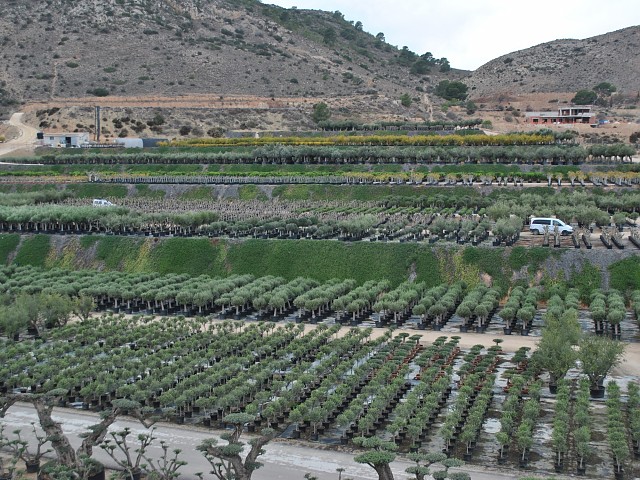OLEA EUROPEA - OLIVE
The olive, known by the botanical name Olea europaea, meaning "European olive", is a species of small tree in the familiy Oleaceae, found traditionally in the Mediterranean Basin. The species is cultivated in all the countries of the Mediterranean, as well as South America, South Africa, China, Australia, New Zealand, Mexico, and the United States. Olea europaea is the type species for the genus Olea.
The olive's fruit, also called an "olive", is of major agricultural importance in the Mediterranean region as the source of olive oil; it is one of the core ingredients in Mediterranean cuisine. The tree and its fruit give their name to the plant family.
The olive tree, Olea europaea, is an evergreen tree or shrub native to Mediterranean Europe, Asia, and Africa. It is short and squat, and rarely exceeds 8–15 m in height. 'Pisciottana', a unique variety comprising 40.000 trees found only in the area around Pisciotta in the Campania region of southern Italy, often exceeds this, with correspondingly large trunk diameters. The silvery green leaves are oblong, measuring 4–10 cm long and 1–3 cm wide. The trunk is typically gnarled and twisted
The small, white, feathery flowers, with ten-cleft calyx and corolla, two stamens, and bifid stigma, are borne generally on the previous year's wood, in racemes springing from the axils of the leaves.
Olives are not native to the Americas. Spanish colonists brought the olive to the New World, where its cultivation prospered in present-day Peru, Chile, and Argentina. The first seedlings from Spain were planted in Lima by Antonio de Rivera in 1560. Olive tree cultivation quickly spread along the valleys of South America's dry Pacific coast where the climate was similar to the Mediterranean. Spanish missionaries established the tree in the 18th century in California. It was first cultivated at Mission San Diego de Alcala in 1769 or later around 1795. Orchards were started at other missions, but in 1838, an inspection found only two olive orchards in California. Cultivation for oil gradually became a highly successful commercial venture from the 1860s onward. In Japan, the first successful planting of olive trees happened in 1908 on Shodo Island, which became the cradle of olive cultivation.
An estimated 865 million olive trees were in the world as of 2005, and the vast majority of these were found in Mediterranean countries, with traditionally marginal areas accounting for no more than 25% of olive-planted area and 10% of oil production.
The olive tree, Olea europaea, has been cultivated for olive oil, fine wood, olive leaf, ornamental reasons, and the olive fruit. About 90% of all harvested olives are turned into oil, while about 10% are used as table olives. The olive is one of the "trinity" or "triad" of basic ingredients in Mediterranean cuisine, the other two being wheat for bread, pasta, and couscous, and the grape for wine.





